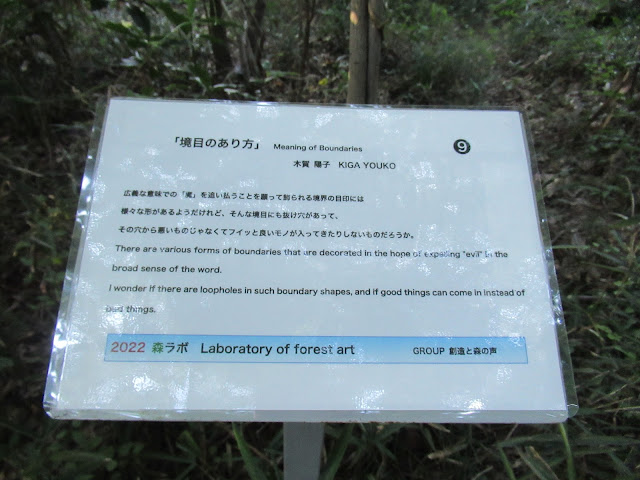OK. So, artists for GROUP the Creation and Voice of the Woods may have found the exit from the tunnel of Oak Tree Wilt. It’s not the case in general for Kanagawa Prefecture. I have a feeling especially the north forests of Yokohama this year have the worst infestation to date. Niiharu Citizen Forest is in a poor condition. Just walking around for my recovery from Gastroenteritis, I met the beloved Niiharu being sick … One of my seniors of Kanagawa Forest Instructors told me the 8 years’ data from his forest in Fujisawa showed roughly 20% of affected oaks could survive. “Well, the disease is known in Japan for more than millennia. This time will be the same. The descendants of survived 20% will sprout for the forest of post-epidemic. The life goes on.” Er, yeah. Just like homo sapience on this planet facing COVID-19, maybe ...
 |
| These days, the infestation spreads from sawtooth and jolcham oaks to ring-cupped oaks in Niiharu … |
 |
| In Niiharu, this supposedly text-book example of Yatoda rice paddies must have been surrounded by green trees in September. Instead, could you figure out browned patches here and there? They are dead oaks. |
Yet, it is disappointing to find desiccated brown patches here and there on the slopes of mountains and hills. In late summer they were supposed to be deep green, proudly showing their photosynthesis preparing for coming winter. Now the discolored mass is a sign of giant tombs for huge oaks. (Platypus quercivorus, the vector of Raffaelea Quercivora fungus for oak tree wilt, does not infect small and young trees but swarm around large old oaks. Please see my post on August 23, 2019.) I was once asked by a landlord in Hadano 秦野 whose property was along a busy commuter road. His forest was infested by the oak wilt and large trees suddenly died. They may fall unexpectedly over the head of cars and pedestrians. Many people using the road, including the municipal government, asked him to deal with those dangerous objects ASAP. He said, “But you know, asking pro to cut these huge dry woods cost more than 100 million yen. Who has such fortune!? Do you know a resource for these tasks? Grants? Loans?” Mmmmmmm … as the problem is wide-spread, governmental money is stretched thin. They can only deal with trees on public land. There’s no official help … maybe crowdfunding, then? Problems on private properties are practically left for self-helps of landlords, even when the possible harm is for wider public ...
 |
| The
mountains of Tanzawa is suffering from large infestation this year. The photo was taken in Yadoriki recently. Could you notice large browned parts in the forest over there? |
 |
| This one
was taken in deeper mountain. Anyway, oak tree wilts are obvious here. |
I’ve heard the forests in western Japan including Kinki 近畿地方 and Chugoku Regions 中国地方 are experiencing the issue already for more than 20 years. The current conditions of the forest for Laboratory of Forest Art could be miraculous. It may last as long as the artists tend their field with artistic care. Or, 2022 show could be just lucky for lower infection rates … The story sounds very similar to life these days … Can Director General’s remark about the end of COVID-19 materialize? The forest for the artists of GROUP the Creation and Voice of the Woods is on their way to long-term recovery? I keep crossing my fingers of both hands …
If you find environmental issues in Kanagawa Prefecture, please make a contact with Kanagawa Natural Environment Conservation Center 神奈川県自然環境保全センター
657 Nanasawa, Atsugi City, 243-0121
〒243-0121 厚木市七沢657
Phone: 046-248-0323
You can send an enquiry to them by clicking the bottom line of their homepage at http://www.pref.kanagawa.jp/div/1644/



















































